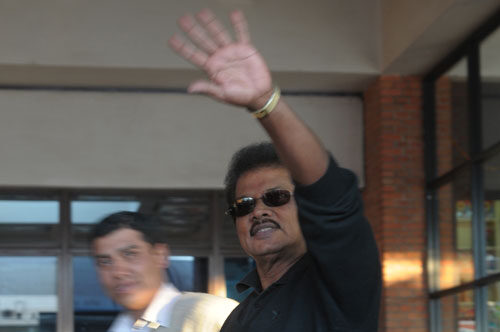A few days ago, a fellow journalist, in a reaction to a facebook posting of mine, asked me a question, “What will happen to Nepali cricket after Roy Dias is gone? Would it collapse along with his farewell?”

Roy Dias leaves Nepal after nine years as coach. Photo by Dipesh Shrestha/Republica
A few of my other friends scoffed at it. A few were angry, while a few thought the comment was insane. What impact can a single man make to the whole sector? A reasonable assessment… Perhaps pragmatic approach… For this approach makes you continue, even after a minor debacle…
A similar story had appeared in an international media few months ago, mocking New Zealand cricket. It said the entire New Zealand cricket would retire, when Daniel Vettori, its captain, decides to call it a day. No doubt, Daniel Vettori has been one of the few things Kiwi cricketers can take pride in, over the last decade or so. But he alone is not New Zealand cricket. But the above lines only highlight the contribution one single human being can make to the entire fraternity.
Likewise, a deeper look at the question from the fellow journalist makes you try and understand why it came. It came from a person that loves Nepali cricket. And is worried for it… Worries and planning do not make good bedfellows. They have to be kept aside, separately in water tight compartments, for worries may hamper plans. But you worry, if the road ahead looks foggy, sights gets blurred by the confusion that crossroads bring in your mind. And we can’t forget that Nepali cricket stands at the crossroads.
Crossroads it is, because a coach that has been there for 9 years (actually just a few months short of a decade), is leaving. Crossroads it is, because we haven’t yet groomed a person, who can take over half of the responsibilities that man was given. Crossroads it is, because we have a cricket board that is clearly divided, evident by the President and General Secretary hardly present together in planning meetings. Crossroads it is, because after a hard fight over the years we have achieved the status of number one ranking among Non-Test playing nations in Asia.
This is a fight that started nine years ago, when we got an old school coach from Sri Lanka that believed in teaching discipline first and then improving techniques. A coach who had played cricket at the highest level, the Test matches, and already coached a Test side… Those were the days we were only beginning to learn how to grip the willow.
Having been one of the first journalists to have met him in Kathmandu, I remember a fellow colleague asking Roy, “Sir, can you tell me about what kind of player you were?” This is perhaps the best example of what we, as journalists and nation, knew about cricket. Next to nothing…
Times change, the same way cricket pitch does over five days of Test cricket. And now we have a side that may not be world beaters, but are at least the top side in Asia (how many Non-Test playing cricket nations do we hear of outside Asia?). And that perhaps shows what Roy Dias has given us. His belief in his methods, his ways, of taking control, of mentoring the players, have been vindicated. The rankings will remain in place till the end of 2012, and Cricket Association of Nepal will be richer by 50 to 60K in USD, for infrastructure development. And for now on, we’d be dependent on a new coach, to take our team, hopefully, to newer heights. A new chapter has to begin. And this could be good grounds to begin it.
Under the mentorship of Roy Dias, we’ve won more matches than lost. And that should make a cricketing nation proud. Apart from wins, our cricketers have been our goodwill ambassadors to the places they’ve visited. In a recent meeting Dias told me, “It’s not only about winning or losing. It’s also about how you play. We can’t forget that Cricket is a gentleman’s game.”
That would be his contribution too, trying to bring in gentlemanliness back in cricket. And at the risk of sounding emotional, I would say, “Roy, for that at least, you’d be missed!”
(The article originally appeared in The Kathmandu Post, 18th December, 2010, in a weekly column and also in the author’s personal blog.)
